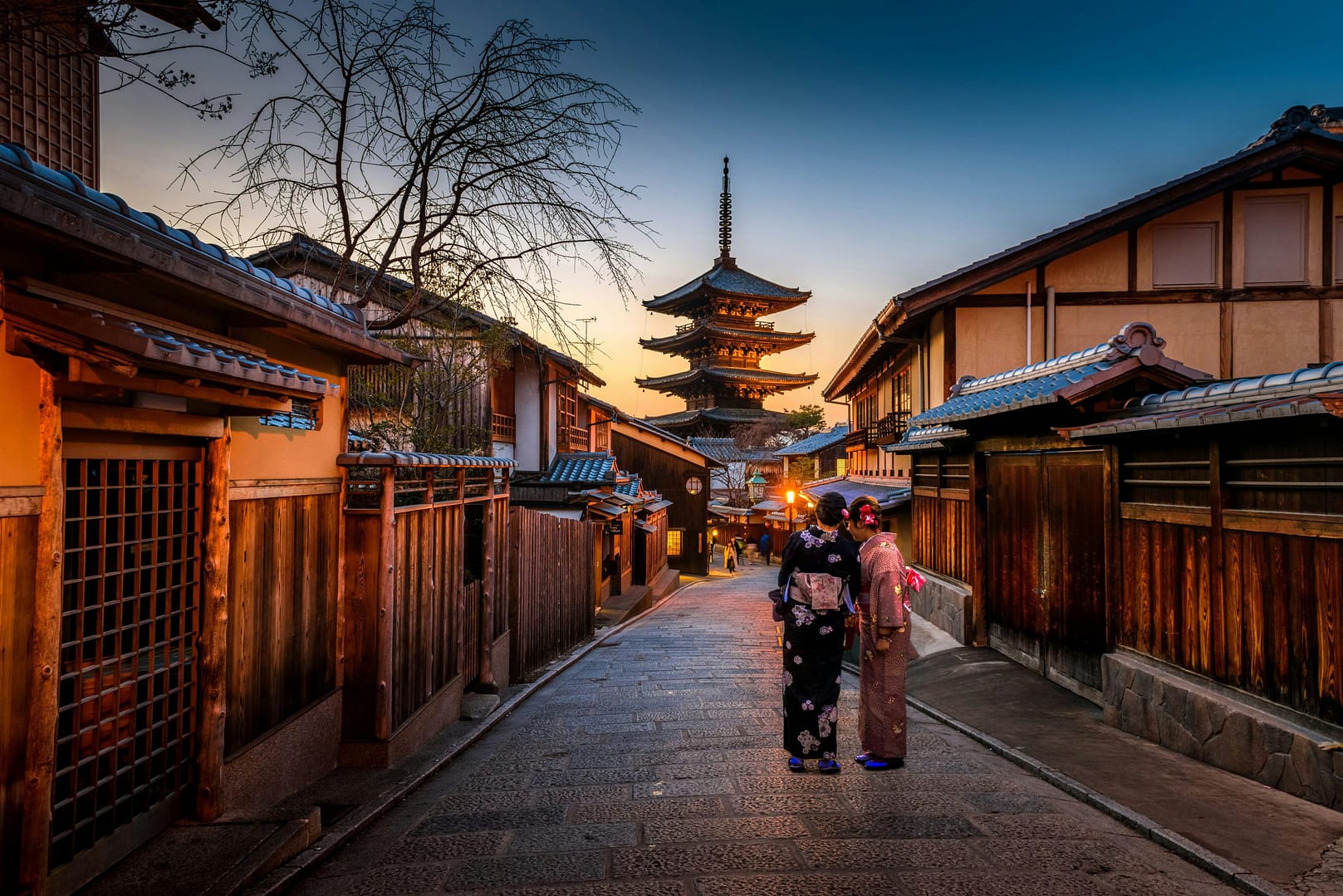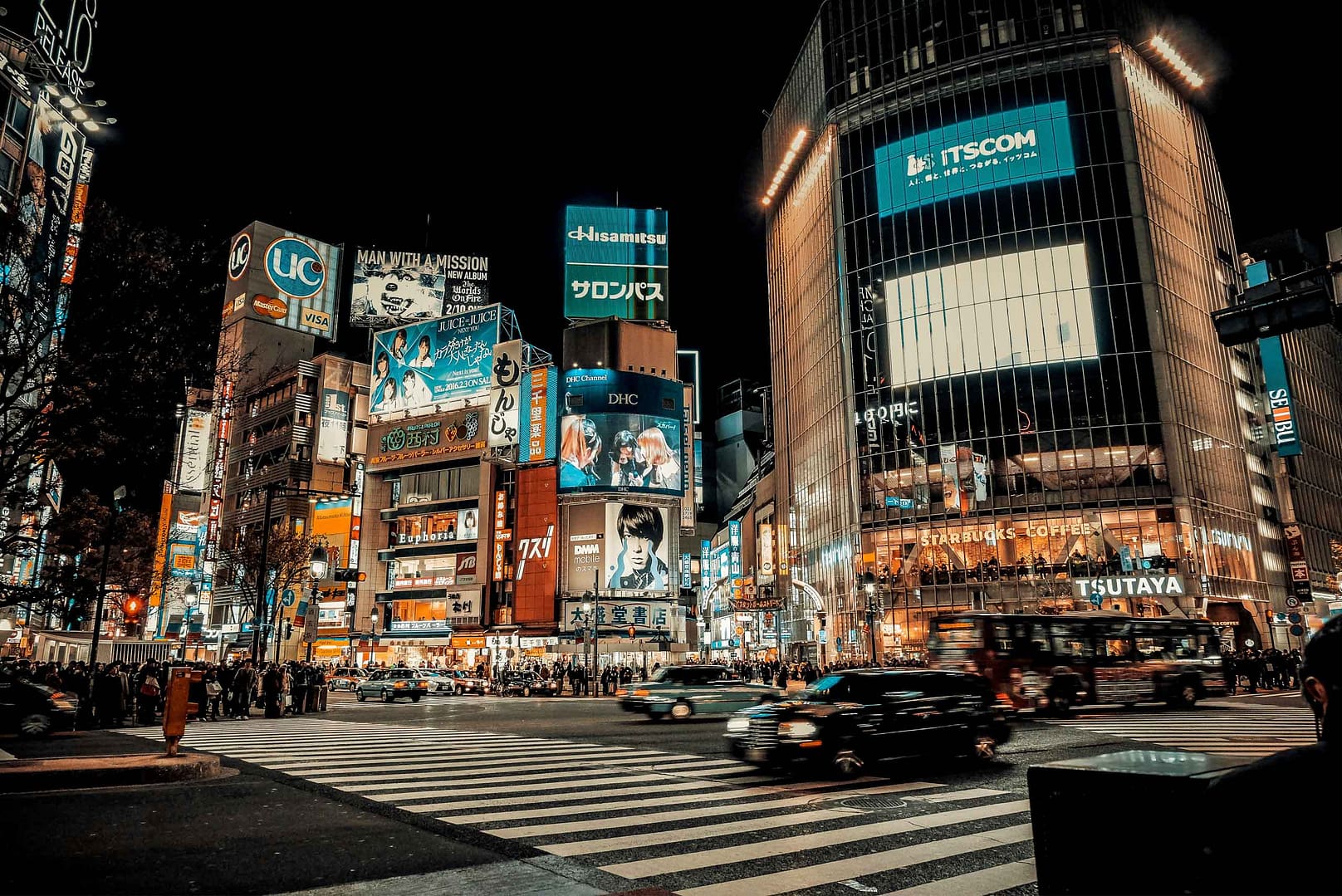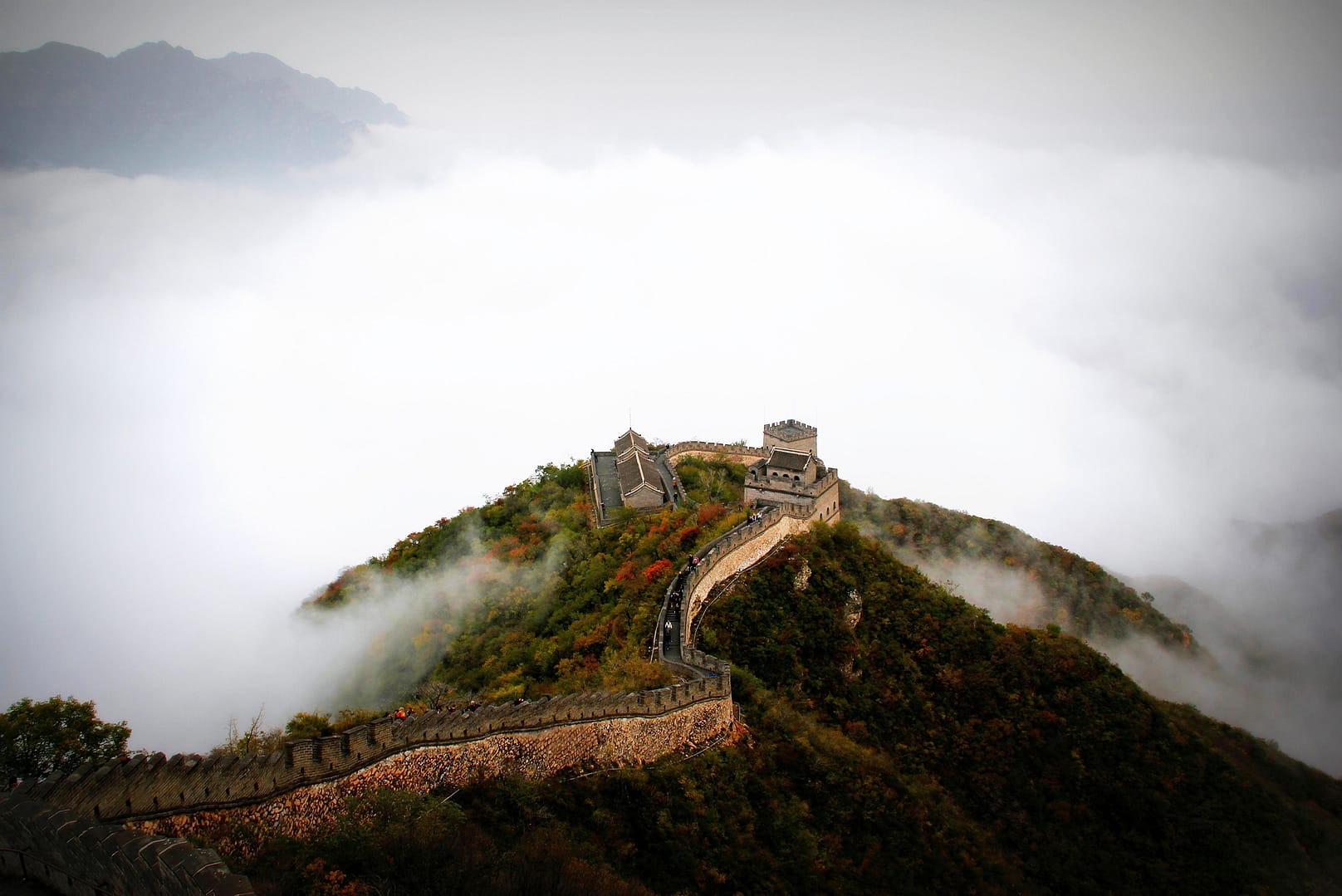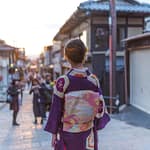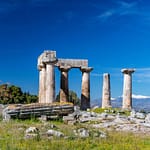Craving a fusion of ancient traditions and futuristic cities? Yearning for serene temples alongside bustling markets? Japan offers a captivating blend. Explore snow-capped mountains, iconic cherry blossoms, and mouthwatering cuisine. Immerse yourself in a world where samurai legends echo through historic castles, and the art of the geisha graces ancient streets.
But before you book your flights and pack your bags, here are the answers to some of the most frequently asked questions (FAQs) to ensure a smooth and unforgettable adventure.
Planning Your Trip
- When is the best time to visit Japan?
The “best” time to visit Japan depends on what you prioritize in your trip:
Pleasant weather and beautiful landscapes:
- Spring (March-May): Enjoy comfortable temperatures and witness the iconic cherry blossoms (late March to early April). However, expect peak crowds and higher costs.
- Autumn (September-November): Experience vibrant fall foliage with cooler temperatures. Crowds are smaller compared to spring, but prices might still be higher than shoulder seasons.
Budget travel and fewer crowds:
- Shoulder seasons (April-mid June & September-November): These periods offer a balance between pleasant weather and manageable crowds. You might miss the peak bloom of cherry blossoms or fall foliage, but you’ll find better deals on flights and accommodation.
- Winter (December-February): Enjoy winter sports in Hokkaido or soak in relaxing onsens (hot springs). Prices are typically the lowest, but some areas experience heavy snowfall and some attractions might have limited hours.
Specific interests:
- Festivals: Research Japan’s numerous festivals throughout the year to align your trip with something that interests you.
- Hiking and outdoor activities: Spring and autumn offer comfortable temperatures for exploring the Japanese Alps or other natural landscapes. Consider summer for high-altitude hikes, but be prepared for hot and humid weather at lower elevations.
Here’s a quick summary table to help you decide:
| Season | Pros | Cons |
| Spring | Cherry blossoms, comfortable weather | Peak crowds, high travel costs |
| Summer | Lush greenery, good for hiking (high altitudes) | Hot and humid, rainy season (May-June) |
| Autumn | Beautiful fall foliage, fewer crowds | Cooler temperatures |
| Winter | Budget-friendly, winter sports, onsens | Heavy snowfall in some areas, limited hours for some attractions |
- Is cherry blossom season worth it?
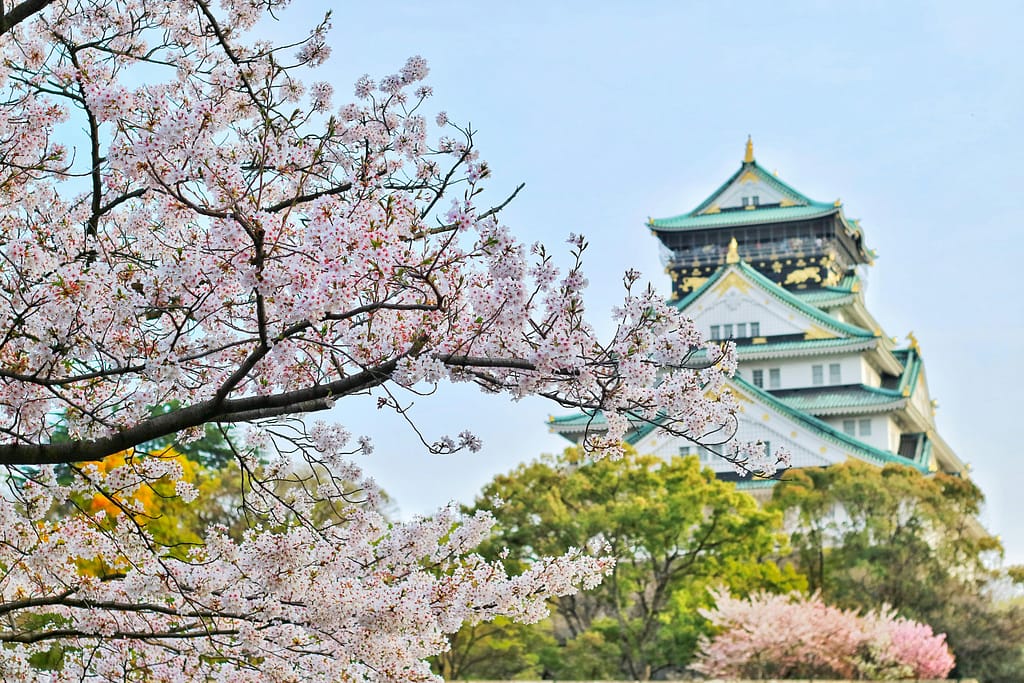
Whether cherry blossom season (also known as Sakura season) in Japan is worth it depends on your priorities and travel style. Here’s a breakdown to help you decide:
Pros:
- Spectacular scenery: Witnessing cherry blossoms in full bloom is a truly breathtaking experience. The delicate pink flowers against traditional architecture and natural landscapes create picture-perfect moments.
- Cultural immersion: Hanami (cherry blossom viewing) is a major cultural event in Japan. Participating in picnics under the blossoms allows you to experience a cherished Japanese tradition.
- Pleasant weather: Cherry blossom season typically coincides with spring (late March to early April), offering comfortable temperatures for exploring outdoors.
- Festive atmosphere: Many parks and gardens host festivals and events during the Sakura season, adding to the celebratory mood.
Cons:
- Crowds: Cherry blossom season is peak tourist time in Japan. Popular spots can get extremely crowded, making it difficult to find peaceful viewing areas or secure accommodation.
- Higher costs: Flights, accommodation, and transportation prices tend to be at their peak during sakura season. Be prepared for higher travel expenses.
- Unpredictability: The exact bloom time of cherry blossoms varies depending on weather conditions. There’s a chance you might miss the peak bloom if your travel dates don’t coincide perfectly.
Here’s who might find cherry blossom season especially appealing:
- Nature enthusiasts: If you appreciate stunning natural beauty, the sight of cherry blossoms will leave you awestruck.
- Culturally curious travelers: Immerse yourself in Japanese traditions and witness a cherished cultural event.
- Travelers with flexible schedules: If you can adjust your travel dates to align with the predicted peak bloom, you’ll get the full experience.
Alternatives to peak season:
- Shoulder seasons: Consider visiting Japan in the weeks before or after peak bloom. You’ll still see some blossoms and encounter smaller crowds and potentially lower travel costs.
- Other flower seasons: Japan also boasts beautiful displays of other flowers throughout the year, like wisteria in late spring and hydrangeas in early summer.
Ultimately, the decision of whether to visit Japan during cherry blossom season is yours. Weigh the pros and cons based on your travel preferences and budget. No matter when you choose to go, Japan offers a unique cultural experience and stunning scenery.
- How long should I spend in Japan?
A week is a good starting point, allowing you to explore the highlights of major cities like Tokyo, Kyoto, and Osaka. If you have more time, consider venturing to charming towns, and historical sites, or relaxing in natural hot springs (onsens).
- Do I need a visa to enter Japan?
Visa requirements depend on your nationality and the length of your stay. Check Japan’s Ministry of Foreign Affairs website for the latest information.
- What are the Entry and Visa Requirements in Japan for US citizens?
The good news for US citizens is that entering Japan for short-term tourism is currently quite straightforward! Here’s a breakdown of what you’ll need:
Visa Exemption:
- US citizens can enjoy visa-free (as of March 17, 2024) entry to Japan for stays of up to 90 days. This allows for tourism and business purposes.
Passport:
- Your passport must be valid for the entirety of your stay in Japan.
- Make sure it has at least two blank pages for entry and exit stamps.
Onward or Return Ticket:
- You’ll need to show proof of an onward or return flight ticket upon arrival in Japan. This demonstrates you don’t intend to stay longer than your visa-free period.
COVID-19:
Effective as of April 29, 2023, there are currently no COVID-19 related entry requirements for US citizens. This means you won’t need to present proof of vaccination or a negative COVID-19 test upon arrival.
- Is Japan safe for travelers?
Japan is a haven for travelers seeking a safe adventure. Crime rates are very low, and the culture prioritizes respect and politeness. You can explore freely, day or night, with peace of mind. While petty theft can occur in crowded areas, basic vigilance is enough. Scams are uncommon, but be cautious of unsolicited services or unrealistic deals. With a little awareness, Japan’s safety will let you focus on having an amazing trip!
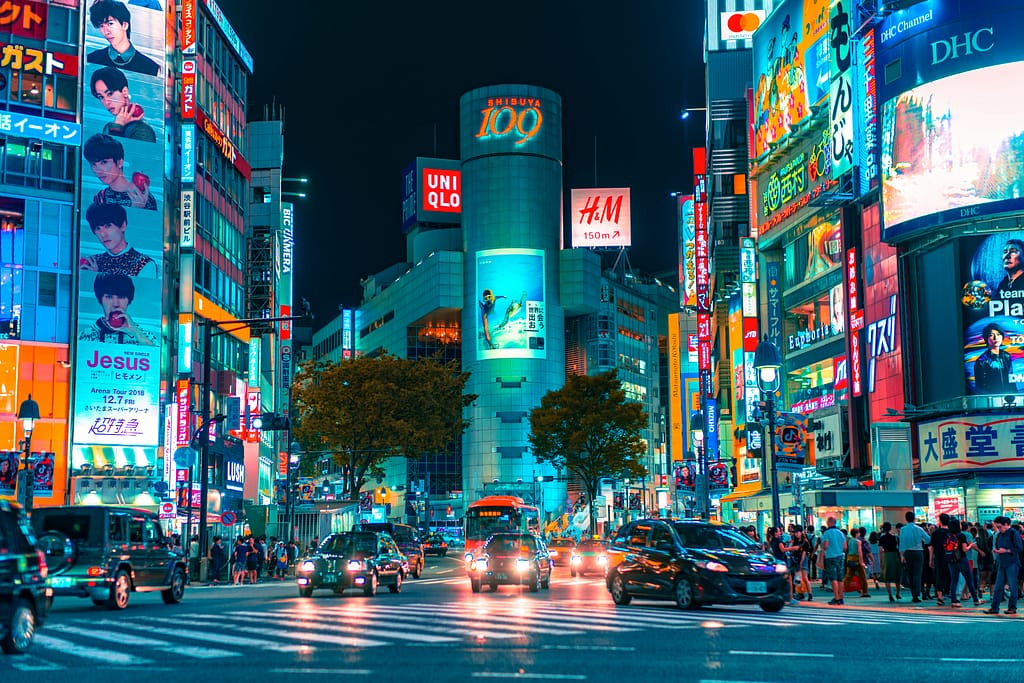
- What is the best travel insurance for Japan?
There’s no single “best” travel insurance for Japan, as the ideal plan depends on your specific needs and itinerary. However, here are some top contenders with their strengths to help you choose:
- Best Overall: Tin Leg (through Squaremouth)
- Covers COVID-19
- Strong medical coverage (up to $500,000)
- Trip cancellation/interruption for various reasons
- Winter sports and adventure activities coverage (optional add-on)
- Best Value with Robust Coverage: Generali Global Assistance (through Squaremouth)
- Covers COVID-19
- Reasonable price point
- Medical coverage up to $150,000
- Trip cancellation/interruption for various reasons
- Baggage and travel delay coverage
- Best for Travel Delays: IMG (through Squaremouth)
- Covers COVID-19
- Excellent coverage for trip delays and missed connections
- Medical coverage up to $250,000
- Trip cancellation/interruption for various reasons
Here are some additional factors to consider when choosing travel insurance for Japan:
- Trip Duration: Longer trips might benefit from higher coverage limits.
- Activities: If you plan on skiing, snowboarding, or other adventure activities, ensure your plan covers them (may require an add-on).
- Your Age and Health: Pre-existing medical conditions might require special considerations or exclusions.
Here are some resources to help you compare plans:
- Squaremouth: https://www.squaremouth.com/
- InsureMyTrip: https://www.insuremytrip.com/
By considering your needs and comparing options, you can find the best travel insurance for a smooth and secure Japan adventure!
Getting Around
- What are the most popular public transportation mediums in Japan?
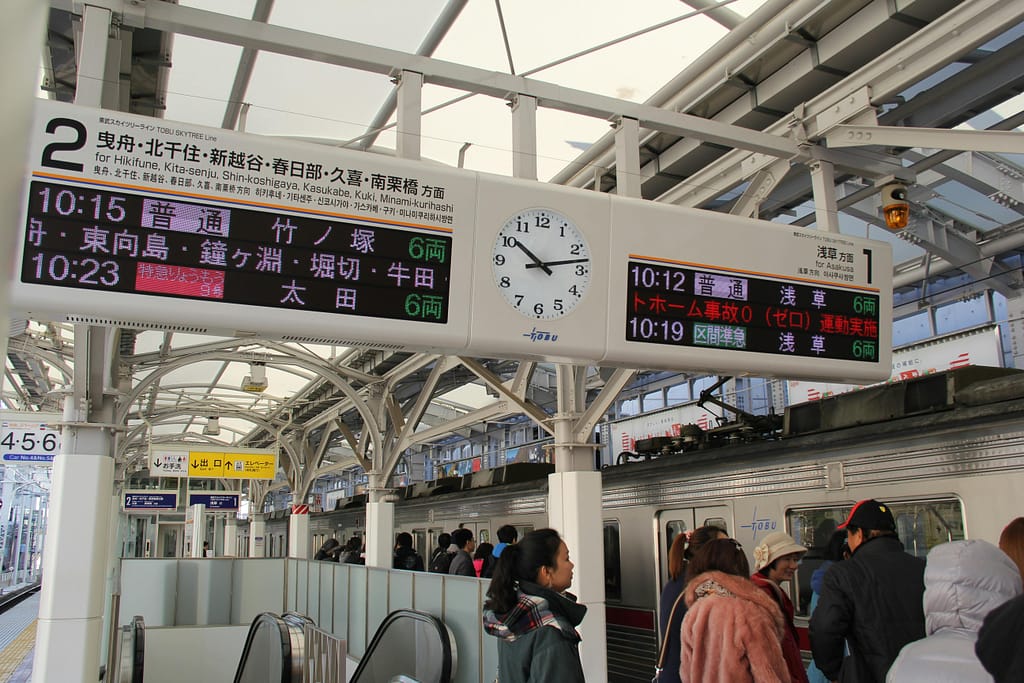
Japan boasts an extensive and efficient public transportation network, offering various options to get you around:
- Trains: The star of the show!
- Shinkansen (Bullet Trains): The fastest and most iconic way to travel between major cities.
- Limited Express Trains: Connect major cities and offer reserved seating for longer distances.
- Local Trains: Perfect for exploring within cities and suburbs.
- Subways: Extensive networks in major cities like Tokyo, Osaka, and Kyoto.
- Buses: Efficient for shorter distances and reaching rural areas not serviced by trains.
- Taxis: Convenient but more expensive than other options, best for short trips or late-night travel.
- Ferries: Connect islands and coastal areas, offering scenic journeys.
Tip: Consider purchasing a prepaid transportation card (IC card) like Suica or Pasmo for convenient fare payment on trains, buses, and subways.
- Is it worth using the Japan Rail Pass?
The Japan Rail Pass is a good deal if you plan to travel long distances by bullet train (Shinkansen) or Limited Express trains on JR lines. It can save you money compared to buying individual tickets for these journeys, especially if you’re visiting multiple cities. However, it’s not ideal for short trips or focusing on one city, as regular train tickets are cheaper within cities. There are also regional JR Passes and special passes for specific destinations that might be better options depending on your itinerary.
- Is Uber available in Japan?
Japan’s Uber isn’t quite the ride-hailing service you might expect. It mostly connects you with regular taxis, often at airports. Taxis can be pricey, so for a smoother and potentially cheaper ride, consider excellent local taxi-hailing apps like- GO Taxi (Japanese-only interface), DiDi Mobility or explore the efficient public transportation network! If you speak Japanese, GO Taxi might be a wider option. For English support, DiDi is a good choice. DiDi’s interface is also available in Spanish.
- What will I see on my Japan trip?
The sights you encounter in Japan will depend heavily on your itinerary, but here’s a taste of what this captivating country has to offer:
- Iconic Landmarks: Witness majestic temples like Kyoto’s Kiyomizu-dera or Tokyo’s Senso-ji, and stand in awe of towering structures like Tokyo Skytree.
- Natural Wonders: Immerse yourself in the serenity of bamboo forests like Arashiyama Bamboo Grove, be dazzled by the vibrant fall foliage, or witness the ethereal beauty of cherry blossoms in spring.
- Bustling Cities: Explore the neon-lit streets of Tokyo, wander through the lively markets of Osaka, or experience the historic charm of Kyoto.
- Unique Experiences: Soak in the relaxing warmth of natural hot springs (onsens), indulge in a traditional tea ceremony, or don a kimono and explore a geisha district.
- Culinary Delights: Savor melt-in-your-mouth sushi, slurp down a steaming bowl of ramen, or sample local specialties from street vendors.
This is just a glimpse! From ancient castles to serene gardens, anime culture to bullet trains, Japan offers a kaleidoscope of experiences waiting to be discovered.

- What are some interesting places to visit in Japan?
Japan is a land of captivating beauty, where ancient traditions seamlessly blend with modern marvels. Here are some of the most interesting places you can visit:
- Tokyo: Immerse yourself in the electrifying energy of this neon-lit metropolis. Explore iconic landmarks like the Tokyo Tower, Senso-ji Temple, and the Imperial Palace. Stroll through the vibrant Shibuya Crossing, a major intersection known for its throngs of pedestrians. Foodies will love the diverse culinary scene, from Michelin-starred restaurants to bustling street food stalls.
- Kyoto: Experience the heart of Japanese culture in this ancient capital city. Marvel at the exquisite Kiyomizu-dera Temple, perched on a hillside overlooking the city. Wander through serene gardens like Arashiyama Bamboo Grove and explore the vibrant Nishiki Market, a paradise for food lovers. Kyoto is also renowned for its geisha culture and traditional tea ceremonies.
- Mount Fuji: Witness the majesty of this iconic volcano, a UNESCO World Heritage Site. Hike or climb to the summit for breathtaking views (weather permitting), or admire its beauty from nearby Lake Kawaguchiko. Hot springs resorts nestled around Mount Fuji offer a chance to relax and soak in the natural beauty.
- Hiroshima: Learn about the city’s history and resilience at the Hiroshima Peace Memorial Park, a UNESCO World Heritage Site. Visit the Hiroshima Peace Memorial Museum and the Atomic Bomb Dome, powerful reminders of the importance of peace. Hiroshima also boasts beautiful temples, gardens, and a vibrant culinary scene.
- Osaka: Embrace the lively energy of this dynamic city, known as Japan’s “kitchen.” Explore the atmospheric Dotombori district, lined with neon signs and bustling restaurants. Sample the city’s famous street food, like takoyaki (octopus balls) and okonomiyaki ( savory pancakes). Don’t miss Osaka Castle, a magnificent historical landmark.
- Nara: Encounter adorable sika deer roaming freely in Nara Park. Visit Todai-ji Temple, housing a gigantic bronze statue of Buddha. Nara offers a charming escape from the hustle and bustle of big cities, allowing you to experience a more traditional side of Japan.
- Hakone: Relax and rejuvenate in this beautiful mountain resort town. Take a ride on the Hakone Ropeway gondola for stunning views of Mount Fuji (on clear days) and Lake Ashi. Explore the volcanic Owakudani Valley, where geysers erupt from the earth. Hakone is also famous for its hot springs hotels (ryokans).
- Japanese Alps: Hike or ski amidst the breathtaking scenery of the Japanese Alps. Kamikochi, a car-free zone, offers pristine hiking trails and stunning mountain views. Explore charming villages nestled amidst the mountains and discover hidden hot springs.
- Okinawa: Immerse yourself in the tropical paradise of Okinawa, a chain of islands south of mainland Japan. Relax on pristine beaches, go snorkeling or diving in the crystal-clear waters, and explore the unique Ryukyu Kingdom culture.
This list just scratches the surface of the many fascinating places to visit in Japan. With its rich history, stunning natural beauty, and vibrant culture, Japan has something to offer every traveler.
Accommodation
- Where to Stay in Japan?
Japan is a paradise for accommodation seekers! From ultra-modern marvels to retreats steeped in tradition, you’ll find a place to stay that perfectly complements your travel style. Imagine waking up in a sleek, design hotel pulsating with urban energy, or unwinding in a luxurious haven with pampering amenities. Craving a taste of history? Immerse yourself in a charming ryokan, complete with tatami floors, futon beds, and soothing onsen baths. Adventurous spirits can even opt for a shukubo, a unique stay within a Buddhist temple, offering a glimpse into monastic life. And for the ultimate space-saving (and budget-friendly!) experience, Japan’s iconic capsule hotels provide a clean, efficient pod for a restful night’s sleep. No matter your preference, Japan’s diverse accommodation options guarantee an unforgettable stay.
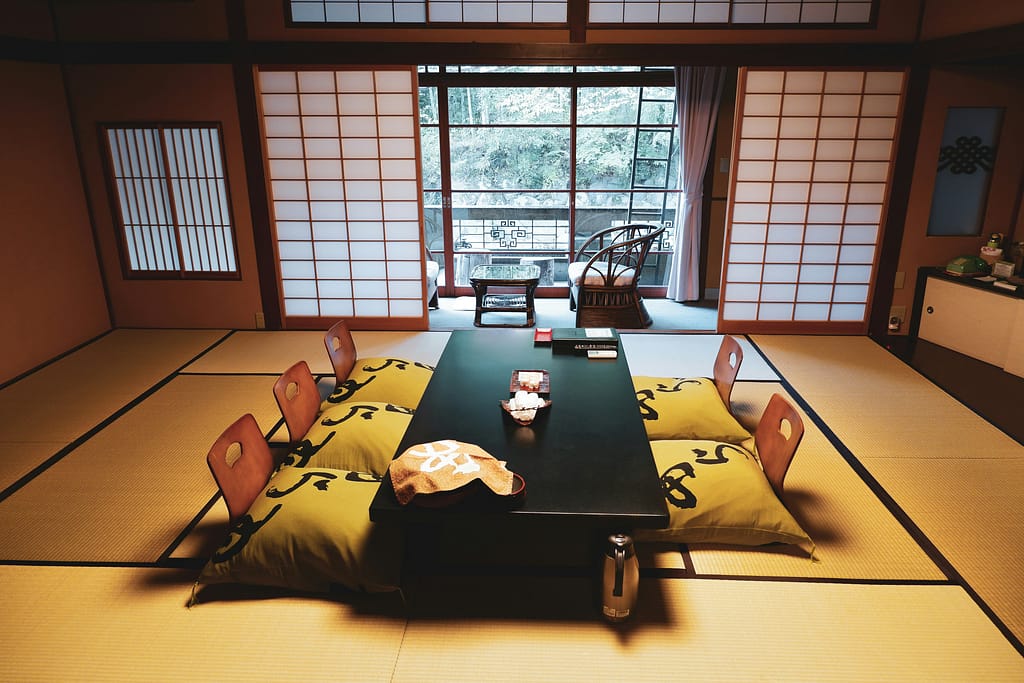
- Is Airbnb available in Japan?
While Airbnb exists in Japan, navigating regulations might limit your choices. In 2018, Japan implemented regulations on short-term rentals. Only properties with a government-issued license can operate on Airbnb, and rentals are limited to a maximum of 180 days per year. Explore alternative booking platforms, direct searches, and consider traditional Japanese accommodations for a truly unique experience.
- What is the normal check-in and check-out time in Japan?
Check-In:
- General Range: Yes, most accommodations in Japan allow check-in sometime between 3 pm and 5 pm. This timeframe is fairly common.
- Variations: Some hotels, especially larger chains or luxury properties, might offer earlier check-in options (for a fee) depending on room availability.
- Luggage Storage: Many accommodations allow you to leave your luggage at the front desk before the official check-in time, freeing you to explore without lugging your bags around.
Check-Out:
- Typical Time: 10 am is a standard check-out time for most hotels in Japan.
- Flexibility: Some accommodations might offer a slight grace period or later check-out upon request, especially if the hotel isn’t fully booked.
Reasoning:
The emphasis on cleanliness is a major part of Japanese hospitality. The time between check-out and check-in allows staff to thoroughly clean and prepare the rooms for incoming guests.
Food
- What are some traditional Japanese dishes that travelers should try?
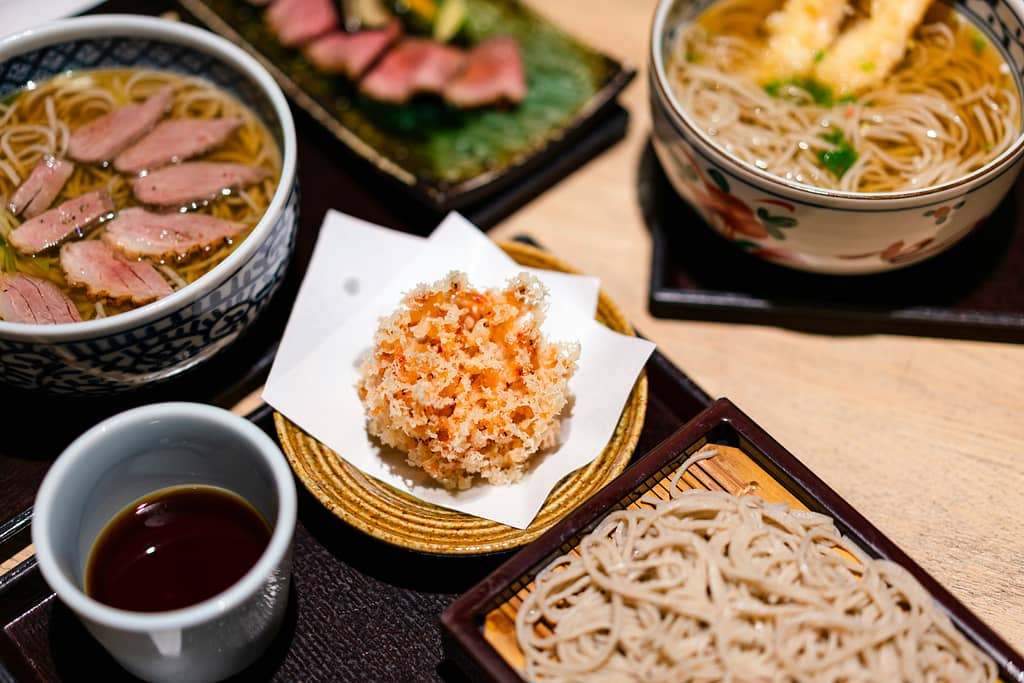
- Sushi: A renowned Japanese dish that showcases the art of combining vinegared rice with various toppings like raw fish or vegetables.
- Ramen: A popular noodle soup dish with Chinese origins, featuring wheat noodles in a flavorful broth with toppings like sliced pork, seaweed, and green onions.
- Tempura: Deep-fried seafood or vegetables coated in a light batter, creating a crispy and delicious dish.
- Soba: Buckwheat noodles served hot or cold with a dipping sauce, offering a unique and nutty flavor.
- Udon: Thick wheat flour noodles served in a savory broth, often with toppings like tempura or fish cakes.
- Yakitori: Grilled skewers of chicken or other meats, seasoned with a savory sauce.
- Tonkatsu: Breaded and deep-fried pork cutlet, typically served with shredded cabbage and tonkatsu sauce.
- Miso Soup: A traditional Japanese soup made with miso paste, tofu, seaweed, and other ingredients, offering a comforting and flavorful start to a meal.
- Onigiri: Rice balls filled with various ingredients like pickled plum, salmon, or seaweed, making for a convenient and tasty snack.
- Matcha: A finely ground green tea powder used to make a frothy and flavorful tea or incorporated into desserts like ice cream and cakes.
These dishes represent a diverse range of flavors and textures that are integral to Japanese cuisine and offer travelers a taste of authentic Japanese culinary traditions.
- How to know which foods are halal in Japan for Muslim travelers?
Finding halal food in Japan can be trickier than usual. Halal restaurants are less common, but there are options! Look for “halal” signs or try restaurants serving Turkish, Malaysian, or Indonesian cuisine. Supermarkets might have halal-marked options too. Learn some basic Japanese food terms (“buta” for pork, etc.) and use translation apps to communicate. Apps like “Halal Gourmet Japan” can help find halal restaurants. Consider self-catering in apartments or ryokans with kitchens if needed. With some planning, you can still enjoy delicious meals in Japan!
- How to survive as a vegan in Japan?
Being vegan in Japan can be an adventure! Here’s a survival guide to navigate the delicious world of Japanese cuisine while staying true to your dietary choices:
Know Your Ingredients:
- Dashi: This fish-based broth is a hidden culprit in many dishes. Look for “dashi-free” options or stick to soy sauce-based broths.
- Hidden Animal Products: Be wary of sneaky animal products in seemingly vegan dishes, like eggs in fried rice or mayonnaise in sauces.
Embrace Vegan-Friendly Options:
- Shojin Ryori: Temple cuisine is often vegan and a delicious exploration of Buddhist vegetarian dishes.
- Soy-Based Wonders: Tofu, tempeh, and edamame are your protein saviors!
- Vegetable Delights: Japan excels in fresh, seasonal vegetables. Explore the bounty of nature at local markets.
Communication is Key:
- Learn Basic Phrases: “Watashi wa vegan desu” (I am vegan) helps communicate your dietary needs.
- Carry a Vegan Card: A card explaining your dietary restrictions in Japanese can be a lifesaver.
Explore Your Options:
- Vegan Restaurants: While less common, vegan restaurants are popping up in major cities. Look online for listings.
- Supermarket Gems: Stock up on pre-made vegan meals, snacks, and fresh produce at supermarkets.
- International Cuisine: Restaurants offering Indian, Thai, or Vietnamese cuisine often have vegan options.
Embrace Flexibility:
- Be Open to Modifications: Sometimes, requesting dishes without certain ingredients can create a vegan-friendly version.
- Snacks on the Go: Pack some vegan snacks for situations with limited options.
Remember:
- Japan is Evolving: The vegan movement is gaining ground, so options are increasing.
- Embrace the Challenge: Finding vegan food can be an adventure, but the rewards are delicious!
Communication and Culture
- Do they speak English in Japan?
While English isn’t widely spoken in everyday life throughout Japan, here’s a breakdown to help you navigate:
- Major Cities: In tourist hotspots like Tokyo, Kyoto, and Osaka, you’ll find a better chance of encountering people who speak English, especially in areas frequented by tourists (hotels, restaurants, train stations). Many signs and announcements might also have English translations.
- Rural Areas: English proficiency is less common in rural areas. However, don’t be discouraged! Japanese people are known for their helpfulness, and you might be surprised by someone’s willingness to assist you even with limited English.
Communication tips:
- Learn some basic Japanese phrases: A simple “konnichiwa” (hello) or “arigatou gozaimashita” (thank you) goes a long way. Here are a few more:
- Konbanwa – Good evening, good night
- Sumima sen – I’m sorry or excuse me (also used to call the staff at a restaurant)
- Kudasai – Please
- Matane – See you later
- Watashi wa began / bejetarian des – I’m vegan / vegetarian (though it might not mean anything to most people)
- Ita daki mas – Said before eating, similar to bon appetite. Literally, it is a way to thank the animals that’ve given their soul for your meal.
- Wakarima sen – I don’t understand
- O genki des – How are you? (formal)
- Genki – How are you (informal)
- Oishikatta des – It was delicious (say it after a meal you enjoyed)
- Kanpaai – Cheers
- Use translation apps: These can be helpful for basic communication and deciphering signs. Use Google Translate, you can capture a picture of something written in Japanese and the app will translate it for you.
- Carry a phrasebook: A physical phrasebook can be handy, especially in rural areas with limited internet access.
- Embrace gestures and nonverbal communication: Sometimes, actions speak louder than words! Be patient and try to communicate through gestures and body language.
- What are some Japanese etiquette for tourists?
Here are some essential Japanese etiquette tips for tourists:
- Bowing: Bowing is a common greeting and shows respect. A slight bow is appropriate for casual greetings, while a deeper bow shows greater respect. If someone bows to you, return the bow.
- Taking off shoes: In temples, shrines, ryokans (traditional inns), and some restaurants, you’ll need to take off your shoes. Look for designated areas to leave them.
- Respecting personal space: Maintain a comfortable distance in conversations, especially on crowded public transportation.
- Using chopsticks: Mastering chopsticks can take practice, but don’t rub them together or stab your food. Rest them on a chopstick rest when not in use.
- Slurping: Slurping noodles or ramen is considered a sign of enjoying your meal, not bad manners.
- Tipping: In Japan, tipping is not a common practice and can even be considered rude in some situations. If you do leave a tip, you might find yourself being chased by a waiter, who may think you’ve left your change by mistake. Instead of tipping, a thoughtful alternative is to show appreciation by bringing a small gift from your country, especially when taking a guided tour or participating in a cooking class. This gesture is often more warmly received and aligns better with Japanese customs and etiquette.
- Speaking on public transportation: Keep your voice down and avoid loud phone calls while riding trains or buses.
- Escalator etiquette: Stand on the left side of the escalator if you’re not in a hurry. The right side is for those who want to walk up.
- Garbage disposal: Japan has a strong emphasis on cleanliness. Carry a small bag to hold your trash until you find a designated bin.
- Bathroom etiquette: Many public restrooms have features unfamiliar to Westerners, like heated toilet seats and bidets. Take some time to familiarize yourself with the controls (usually with pictures or symbols).

Money Matters
- What’s the currency in Japan?
The Japanese Yen (JPY). ATMs are widely available, and credit cards are accepted at many establishments, but cash is still king in some rural areas.
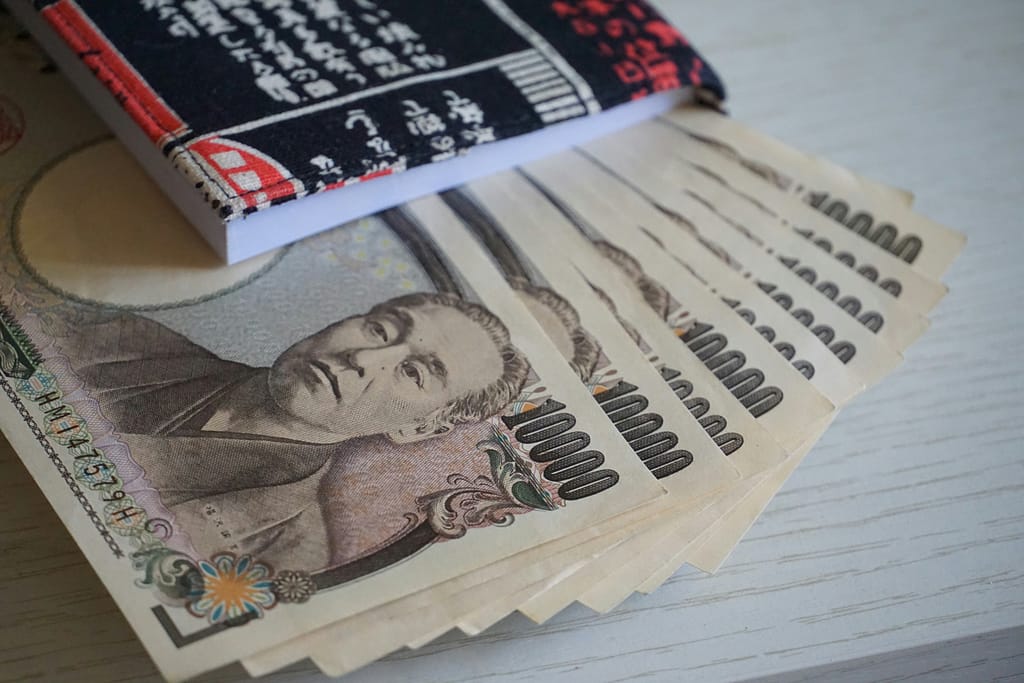
- Where to exchange money?
It can prove fairly difficult to find ATMs in Japan, so it’s a good idea to exchange money before you go or to take reasonably large amounts out at a time. When you do need to take more out, head to a post office, or a 7-Eleven or Citibank ATM.
Airports: All major airports in Japan, including Narita and Haneda in Tokyo, Kansai International in Osaka, and Chubu Centrair in Nagoya, have currency exchange counters. They offer convenience but may not have the best exchange rates.
Banks: Major Japanese banks like Mizuho Bank, Sumitomo Mitsui Banking Corporation (SMBC), and The Bank of Tokyo-Mitsubishi UFJ offer currency exchange services. However, some branches might not provide this service, especially in rural areas. Check their websites beforehand.
World Currency Shops: This is a popular chain with locations throughout Japan. They are operated by a subsidiary of MUFG Bank, offering competitive rates and convenient locations.
Hotels: Some hotels may offer currency exchange, but rates might be less favorable compared to other options.
- How much does Japan travel cost?
Traveling Cost for Japan depends on your travel style and preferences. Here’s a breakdown to help you estimate:
Accommodation:
- Budget: Hostels ($20-50/night), capsule hotels ($30-70/night)
- Mid-range: Business hotels ($50-100/night)
- Luxury: Ryokans with full experience ($150+/night), high-end hotels ($200+/night)
Food:
- Budget: Convenience stores, street food ($10-20/day)
- Mid-range: Casual restaurants, local markets ($30-50/day)
- Luxury: Fine dining, specialty experiences ($100+/day)
Transportation:
- Japan Rail Pass (optional): Consider this if visiting multiple cities by bullet train (costs vary depending on coverage and duration).
- Otherwise: Public transportation is efficient (budget around $30-50/day for local trains, subways, buses).
Activities:
- Free: Temples, shrines, some gardens
- Paid: Museums, theme parks, guided tours (costs vary)
Daily Budget Estimates:
- Budget traveler: $50-100/day
- Mid-range traveler: $100-200/day
- Luxury traveler: $200+ per day
Additional Tips:
- Factor in flights: This can significantly impact your overall budget.
- Consider travel during shoulder seasons (spring or fall) for potentially lower costs.
- Plan some free activities to balance out paid experiences.
Essentials
- Which airport should I fly to? Narita or Haneda? Or Osaka instead of Tokyo?
Choosing between Narita (NRT) and Haneda (HND) airports in Tokyo depends on a few factors:
Convenience:
- Haneda: Generally closer to central Tokyo (faster and potentially cheaper access to the city).
- Narita: Further out (requires additional travel time and cost to reach the city).
Flight Options:
- Narita: Traditionally handled more international flights, though Haneda is increasingly serving long-haul routes.
- Haneda: Might have fewer flight options from your origin city compared to Narita.
Price:
- Narita: Flights might be slightly cheaper due to higher competition.
Travel Style:
- Connecting to other destinations in Japan: Narita might offer better connections for domestic flights within Japan if you plan to travel extensively within the country.
Here’s a quick recommendation:
- For most travelers, especially first-time visitors to Tokyo, Haneda is the more convenient choice. It offers faster and potentially cheaper access to the city center.
Flying into Osaka (KIX) instead:
- Consider Osaka (KIX) if you plan to spend most of your time in western Japan (Kyoto, Osaka, Hiroshima). It can save you travel time compared to flying into Tokyo.
- However, if Tokyo is a major focus of your trip, flying into a Tokyo airport makes more sense.
Ultimately, the best choice depends on your specific needs and priorities. Consider factors like flight availability, price, travel time to your destination in Japan, and potential onward travel plans.
- Where can you leave your luggage in Japan?
In Japan, you have several options for leaving your luggage safely while you explore:
- Coin Lockers: These are widely available at train stations, airports, and tourist destinations. They come in various sizes to accommodate different types of luggage. Prices typically range from 300 yen to 800 yen per day (around $2-5 USD). Keep in mind that lockers might have limited capacity, especially in popular areas or during peak travel times.
- Luggage Storage Counters: These are often located at airports and major train stations. They offer more flexibility and security compared to coin lockers, but they tend to be more expensive (around 1000 yen or $7 USD per day and up).
- Hotel Storage: Many hotels allow guests to leave their luggage before check-in or after check-out for a fee or even for free as a service.
- Convenience Stores: Some convenience stores, especially in larger cities, offer luggage storage services through partnerships with luggage storage companies.
Here’s a quick guide to choosing the best option for you:
- Short-term storage (a few hours): Coin lockers are a convenient and affordable option.
- Long-term storage (multiple days): Luggage storage counters or hotel storage might be more suitable, especially if you have large or valuable luggage.
- Convenience: Consider location and ease of access when choosing between lockers, counters, or hotels.
Ready to embark on your Japanese adventure? With these FAQs answered, you’re well on your way to experiencing the magic of Japan. Remember, research specific destinations for detailed information, and be prepared to be amazed by the country’s rich history, breathtaking beauty, and warm hospitality.
